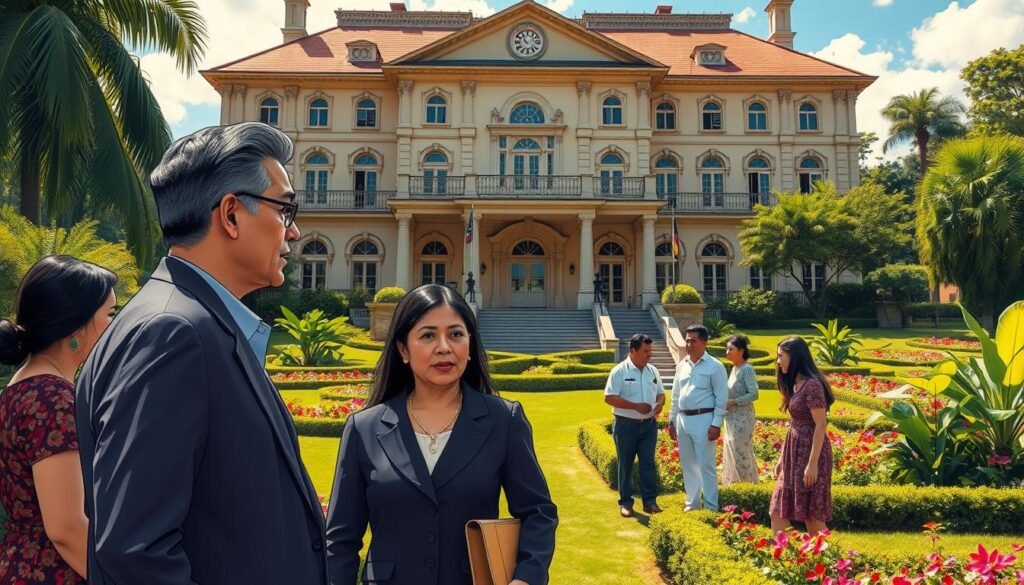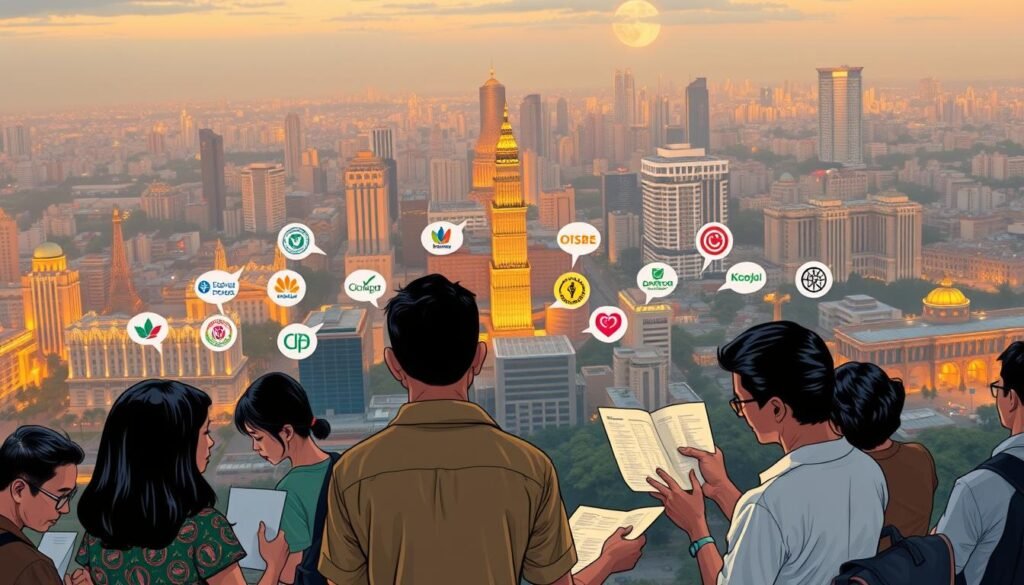Philanthropy has long been a cornerstone of societal progress, rooted in the idea of giving back to communities. From ancient Greece to modern times, the concept has evolved, shaping cultures and economies worldwide. In the United States, philanthropic traditions have developed unique characteristics, driven by influential figures like Andrew Carnegie and John D. Rockefeller.
These pioneers established foundations that continue to impact global development. Their work highlights the power of private initiatives in addressing social challenges. Unlike government programs, philanthropic efforts often focus on innovation and long-term solutions.
In the Philippines, American philanthropy has played a transformative role. From education to healthcare, charitable organizations have supported initiatives that empower local communities. This collaboration underscores the importance of cross-border partnerships in fostering sustainable development.
Key Takeaways
- Philanthropy is a vital force for societal progress.
- American philanthropic traditions are unique and influential.
- Figures like Andrew Carnegie shaped modern charitable work.
- Private initiatives often focus on innovative solutions.
- American foundations have significantly impacted the Philippines.
- Cross-border partnerships drive sustainable development.
Introduction and Context
The concept of giving has shaped societies for centuries, evolving into a powerful tool for change. In the United States, this tradition has been deeply rooted in its culture, with figures like Cotton Mather and Benjamin Franklin laying the groundwork for modern charitable practices. Their contributions highlight the importance of private initiatives in addressing societal challenges.
Philanthropy, defined as the desire to promote the welfare of others, has taken many forms over the years. From funding educational institutions like Harvard and the University of Pennsylvania to supporting healthcare initiatives, it has consistently driven progress. This section explores the historical and contemporary significance of American charitable efforts, particularly in the Philippines.

Background and Purpose
Understanding the role of philanthropy requires a look at its historical roots. Early research shows that charitable giving has been a cornerstone of societal development. For example, Benjamin Franklin’s contributions to public libraries and education set a precedent for future generations. Similarly, Cotton Mather’s writings emphasized the moral duty of helping others.
In the Philippines, American charitable efforts have addressed critical issues like education and healthcare. These initiatives aim to empower local communities and foster sustainable development. By examining these efforts, we can better understand the impact of cross-border partnerships.
Understanding the Philippine Setting
The Philippines presents a unique setting for philanthropic activities. Its diverse culture and economic challenges make it a focal point for charitable initiatives. Over the years, American organizations have provided funding and resources to support local development.
For instance, educational programs funded by American donors have helped improve literacy rates. Similarly, healthcare initiatives have provided essential services to underserved communities. These efforts highlight the transformative power of charitable giving in addressing social and economic disparities.
| Key Area | American Contribution | Impact in the Philippines |
|---|---|---|
| Education | Funding for schools and scholarships | Improved literacy and access to education |
| Healthcare | Support for hospitals and clinics | Better healthcare services for communities |
| Community Development | Grants for local projects | Enhanced infrastructure and livelihoods |
By analyzing these efforts, we gain valuable insights into the role of philanthropy in fostering global progress. This exploration underscores the importance of continued collaboration and innovation in addressing societal challenges.
Historical Perspectives on American Philanthropy
The roots of American charitable giving trace back to early influences and visionary donors. From the Foundling Hospital in London to the Red Cross initiatives, European models played a significant role in shaping American practices. These early examples inspired American donors to address societal challenges through innovative solutions.

Early Influences and Pioneering Philanthropists
American charitable work began with pioneers like Andrew Carnegie and John D. Rockefeller. Their contributions set the stage for modern charitable practices. Carnegie’s focus on education and Rockefeller’s support for healthcare transformed the way donors approached societal issues.
These early donors emphasized the importance of long-term impact. They believed in creating sustainable solutions rather than temporary fixes. Their efforts laid the foundation for today’s charitable organizations.
Lessons from European and American Models
European charitable practices, such as the Foundling Hospital, influenced American donors. These models highlighted the importance of structured giving and resource allocation. American donors adapted these lessons to address local needs.
Policy also played a crucial role. For example, tax benefits encouraged donors to contribute more. This interplay between policy and charitable giving continues to shape modern practices.
- Early American donors were inspired by European models.
- Figures like Carnegie and Rockefeller emphasized long-term impact.
- Tax benefits and policy incentives encouraged charitable contributions.
- These historical practices inform modern charitable work.
Understanding these historical perspectives helps us appreciate the evolution of charitable giving. For more insights into the impact of charitable initiatives, explore this detailed analysis.
Defining Philanthropy and Its Impact
Charitable giving has shaped societies across the world, driving progress and innovation. At its core, it represents the voluntary act of contributing resources to improve the lives of others. From ancient Greece to modern times, this practice has evolved to address complex challenges.

Core Concepts and Definitions
The term “philanthropy” originates from the Greek word philanthrōpia, meaning “love of humanity.” Unlike charity, which often focuses on immediate relief, charitable giving aims for long-term solutions. For example, building schools instead of just providing meals.
Historical figures like Andrew Carnegie emphasized the importance of sustainable development. His funding of libraries and educational institutions transformed communities for generations. This approach highlights the difference between short-term aid and lasting impact.
“The best philanthropy is constantly in search of the finalities—a search for a cause, an attempt to cure evils at their source.” – John D. Rockefeller
Evolution of Charitable Models
Over time, charitable models have adapted to meet the needs of a changing world. Early practices were often tied to religious or moral duties. Today, they focus on systemic issues like education, healthcare, and environmental sustainability.
- Historical Examples: The Foundling Hospital in London set a precedent for structured giving.
- Modern Practices: The Bill & Melinda Gates Foundation invests in global health and education.
- Future Trends: Effective altruism seeks to maximize positive outcomes through evidence-based strategies.
Global and Societal Impact
Charitable giving has a ripple effect, touching lives and fostering development. In the Philippines, initiatives funded by American donors have improved literacy rates and healthcare access. These efforts demonstrate the power of cross-border collaboration.
Globally, charitable contributions address issues like poverty, climate change, and inequality. By supporting innovative solutions, donors play a crucial role in shaping a better world. Their efforts complement government programs, creating a more inclusive society.
American Philanthropy’s Transformative Impact in the Philippines
American charitable efforts have reshaped communities across the Philippines, leaving a lasting legacy of progress. Through strategic funding and collaborative partnerships, these initiatives have addressed critical needs in education, healthcare, and infrastructure. This section explores the tangible outcomes of these efforts and the funding models that drive them.

Social Change and Community Development
American charitable initiatives have spurred significant social change in the Philippines. For example, the Rockefeller Foundation has supported programs that improve access to clean water and sanitation in rural areas. These efforts have not only enhanced public health but also empowered local communities to take charge of their development.
Nonprofit collaborations have played a crucial role in these achievements. Organizations like the Ford Foundation have partnered with local groups to implement sustainable projects. These partnerships ensure that solutions are culturally relevant and long-lasting.
- Improved literacy rates through educational programs.
- Enhanced healthcare services in underserved regions.
- Strengthened community infrastructure and livelihoods.
Funding Models and Institutional Support
Various funding models have been employed to support charitable efforts in the Philippines. Major donations from individuals and institutions have been instrumental in driving large-scale projects. For instance, the Gates Foundation has funded initiatives to combat infectious diseases, significantly reducing their prevalence.
Institutional support has also been critical. Foundations often provide not just funds but also technical expertise and capacity-building resources. This holistic approach ensures that projects are effective and sustainable.
“Strategic funding and collaboration are key to creating lasting change in developing countries.” – Anonymous Philanthropist
| Funding Source | Initiative | Impact |
|---|---|---|
| Rockefeller Foundation | Clean water projects | Improved public health in rural areas |
| Ford Foundation | Educational programs | Higher literacy rates |
| Gates Foundation | Healthcare initiatives | Reduced disease prevalence |
These efforts demonstrate the transformative power of charitable giving. By focusing on sustainable solutions and cross-sector partnerships, American donors have made a profound impact in the Philippines. For more insights into collaborative philanthropy, explore this detailed analysis.
Key Philanthropic Initiatives and Institutional Roles
Foundations and nonprofits have been pivotal in addressing critical needs across the Philippines. Their strategic initiatives have transformed communities, focusing on education, healthcare, and sustainable development. By collaborating with local partners, these organizations have amplified their impact, creating lasting change.

Notable Foundations and Nonprofits
American foundations like Carnegie, Rockefeller, and Ford have played a significant role in the Philippines. Their programs address pressing needs, such as improving literacy rates and providing healthcare access. For example, the Rockefeller Foundation has funded clean water projects, enhancing public health in rural areas.
These acts of giving are not just about immediate relief. They focus on long-term solutions that empower communities. The Ford Foundation’s educational programs have helped thousands of students access quality education, driving social and economic progress.
- Carnegie Foundation: Funded libraries and educational institutions.
- Rockefeller Foundation: Supported clean water and healthcare initiatives.
- Ford Foundation: Focused on education and community development.
Collaborations Between Government and Private Sector
Public-private partnerships have been instrumental in scaling philanthropic activities. For instance, the Gates Foundation has worked with the Philippine government to combat infectious diseases. These collaborations ensure that resources are used effectively and reach those in need.
Such partnerships also foster innovation. By combining the strengths of both sectors, they create sustainable solutions that address systemic issues. This coordinated effort has led to significant improvements in healthcare, education, and infrastructure.
“Collaboration between private donors and government agencies is key to achieving large-scale impact.” – Anonymous Philanthropist
| Foundation | Initiative | Impact |
|---|---|---|
| Rockefeller Foundation | Clean water projects | Improved public health in rural areas |
| Ford Foundation | Educational programs | Higher literacy rates |
| Gates Foundation | Healthcare initiatives | Reduced disease prevalence |
These efforts highlight the transformative power of charitable giving. By focusing on sustainable solutions and cross-sector partnerships, American donors have made a profound impact in the Philippines. For more insights into collaborative philanthropy, explore this detailed analysis.
Evolving Strategies, Tax Policies, and Future Opportunities
Modern charitable giving is evolving rapidly, driven by technology and innovative funding models. These changes are reshaping how donors contribute and how organizations maximize their impact. From social media campaigns to sustainable investment strategies, the landscape of charitable efforts is becoming more dynamic and inclusive.

Technological Advancements and Social Media in Giving
Technology is transforming the way people give. Platforms like Facebook and Instagram allow donors to support causes with just a few clicks. Crowdfunding campaigns have also gained popularity, enabling individuals to rally their networks for specific projects.
Social media plays a crucial role in mobilizing philanthropic groups. It amplifies awareness and encourages collective action. For example, viral campaigns have raised millions for disaster relief and medical emergencies.
- Digital Platforms: Facilitate easy and accessible donations.
- Crowdfunding: Empowers individuals to support causes directly.
- Viral Campaigns: Drive large-scale fundraising efforts.
Policy, Tax Benefits, and Sustainable Investment
Tax policies significantly influence donor behavior. Recent reports, such as Giving USA 2024, highlight how tax incentives encourage contributions. For instance, the CARES Act temporarily increased the charitable deduction limit, leading to record-high donations.
Sustainable investment models are also gaining traction. Donors are increasingly funding projects that offer long-term environmental and social benefits. This shift reflects a broader commitment to addressing systemic issues.
“Strategic funding and collaboration are key to creating lasting change in developing countries.” – Anonymous Philanthropist
- Tax Incentives: Encourage higher contributions from donors.
- Sustainable Models: Focus on long-term impact and innovation.
- Government Support: Plays a vital role in sustaining charitable efforts.
Looking ahead, the future of charitable giving will likely be shaped by technological innovation and evolving policies. Organizations must adapt to these trends to maximize their impact. For more insights, explore the future of philanthropy in 2025 and the evolving landscape of charitable giving.
Conclusion
The enduring legacy of American generosity continues to shape communities in the Philippines, driving meaningful progress. From education to healthcare, these efforts have created lasting value for local populations. The role of charitable investment in fostering development cannot be overstated.
Historical examples, such as the Rockefeller Foundation’s clean water projects, and modern initiatives, like the Gates Foundation’s healthcare programs, highlight the transformative power of giving. These efforts demonstrate how cross-border collaboration can address critical needs in the area of social development.
Looking ahead, the role of policy, technology, and innovative funding models will shape future opportunities. Continued support from donors ensures that these initiatives remain sustainable and impactful. America’s charitable legacy serves as a word of inspiration for long-term societal change.
To learn more about the impact of charitable giving, explore this detailed analysis. By recognizing and supporting these efforts, we can build a brighter future for communities in the Philippines and beyond.
FAQ
What is the role of American philanthropy in the Philippines?
American philanthropy plays a significant role in supporting social change, community development, and funding initiatives in the Philippines. It helps address critical needs through grants, partnerships, and institutional support.
How has American philanthropy influenced the Philippines historically?
Early American philanthropists and foundations introduced funding models and strategies that shaped education, healthcare, and community programs in the Philippines, drawing from both European and American practices.
What are some key philanthropic initiatives in the Philippines?
Notable initiatives include partnerships between foundations, nonprofits, and the government. These collaborations focus on education, disaster relief, and sustainable development, creating long-term impact.
How do tax policies affect philanthropic efforts in the Philippines?
Tax benefits encourage charitable giving by providing incentives for donors. These policies help sustain funding for nonprofits and foundations, enabling them to expand their programs.
What role does technology play in modern philanthropy?
Technology and social media have transformed giving by making it easier to donate, raise awareness, and connect with causes. Online platforms also enhance transparency and donor engagement.
How do American foundations collaborate with local organizations in the Philippines?
American foundations often partner with local nonprofits and government agencies to address specific needs. These collaborations ensure that resources are used effectively and align with community priorities.
What are the future opportunities for philanthropy in the Philippines?
Future opportunities include leveraging technology, sustainable investment, and policy reforms to create lasting change. Philanthropic efforts can also focus on education, healthcare, and disaster resilience.
How does philanthropy contribute to social change in the Philippines?
Philanthropy drives social change by funding programs that empower communities, improve access to education, and support economic development. It also fosters innovation and collaboration among stakeholders.
Source Links
- Microsoft Word – Philippines Diaspora Philantrhropy Final.doc
- Introduction to the Special Issue, Philanthropy and Community Well-Being
- Future of Philanthropy
- Microsoft Word – Website – History of Philanthropy 8.25.09
- Philanthropy Background
- What Is Philanthropy? Examples, History, Benefits, and Types
- Philanthropy
- What is Philanthropy and Why is it Important
- Building a resilient future: Mobilising philanthropy in Asia for climate solutions – Alliance magazine
- Harnessing the Power of Philanthropic-Public-Private Partnerships — PAA Chats
- Family Philanthropy in Asia: Q&A with Jenny Santi – Center for High Impact Philanthropy – University of Pennsylvania
- 12.4_Global Phila Rep V44.indd
- The role of public–private–philanthropic partnerships in driving climate and nature transitions
- Microsoft Word – PromoPhilanthropy_Font12_Ver23Feb2005.doc
- TCJA Expiring Provisions and the Implications for Philanthropy
- Where Strategic Philanthropy Went Wrong (SSIR)

